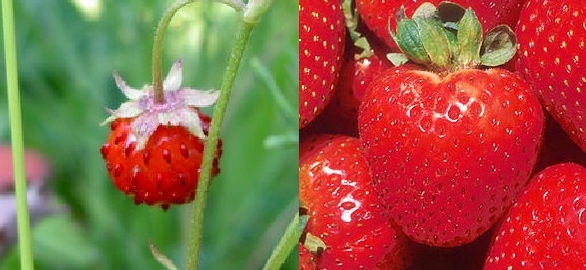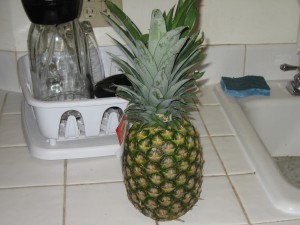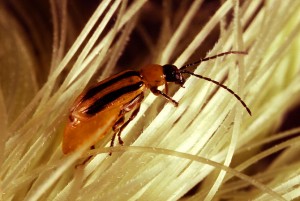Twenty thousand years ago, not a single crop species existed in its current form. Almost* every bite of food you eat today is the result huge amounts of human artificial selection, both unconsciously and intentionally by farmers and plant breeders. Sometimes the obvious changes are minor, for example between wild and domesticated strawberries:
Clearly one of the major traits early strawberry growers selected for was bigger fruits. Which makes sense since it takes about the same amount of time an effort to pick a strawberry either way, but if you’re picking the ones on the right you’ll have more pounds of fruit picked at the end of the day.
But even in this case, the similarity in form hides major changes at the genome left. Strawberries went through two whole genome duplications during domestication (looks like it’s more complicated than I made it sound see comments), so each of the cells in the strawberries on the right contain eight copies of each chromosome, while the strawberry on the left contains the more standard two copies of each chromosome.
On the other end of the spectrum is maize. (more…)


